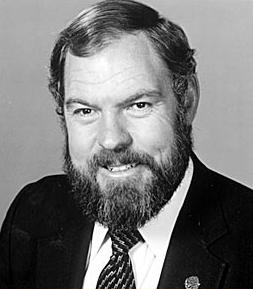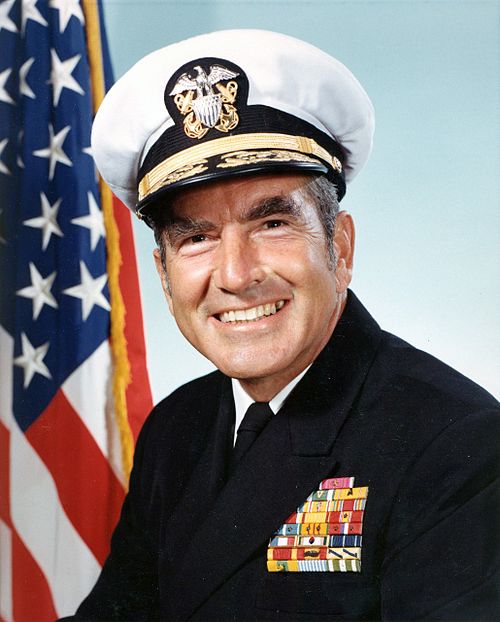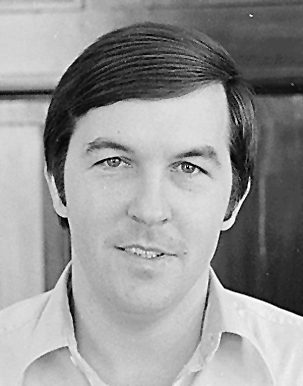EPA Fully Bans Chrysotile Asbestos: A Critical Step Towards Protecting Public Health
In a significant move to safeguard public health, the Environmental Protection Agency (EPA) has finalized a ban on chrysotile asbestos, a toxic mineral responsible for an estimated 40,000 deaths in the United States each year. This announcement comes as a crucial step in addressing the widespread presence of this cancer-causing substance.
This long-awaited ban marks the culmination of decades of effort to address the pervasive threat posed by asbestos. Despite previous attempts by the EPA to eliminate its use, including a federal ban over 30 years ago that was subsequently blocked by a court order, asbestos has remained a persistent danger in homes, schools, and various industries across the country.
“Today is a historic day for our country, bringing hope and some solace to the countless workers and families affected by asbestos,” said Joe Belluck, managing partner at Belluck & Fox. “We may not have a cure for mesothelioma, but we are thankful to the EPA for finally doing the right thing and trying to stop it in its tracks. This ban means a safer, healthier future for generations to come.”
Chrysotile asbestos, one of six types of asbestos, has long been recognized for its role in causing mesothelioma and other serious health issues. Also known as “white asbestos,” chrysotile asbestos is the only form of asbestos still used and imported in the United States today.
The positive effects of this ban extend beyond regulatory measures. Asbestos litigation continues to unfold across the country, with major corporations facing legal battles over their role in exposing consumers to asbestos-related health risks. From Johnson & Johnson’s talc-based products to cases involving military veterans, the link between asbestos exposure and mesothelioma is well established, highlighting the urgent need for accountability and justice.
Joe Belluck’s dedication to defending innocent consumers spans decades, exemplified by his groundbreaking work in tobacco litigation. Today, Belluck & Fox stands as one of the nation’s premier mesothelioma and asbestos law firms, offering compassionate support and legal expertise to those facing the challenges of asbestos-related illnesses. With over 25 years of experience, Belluck & Fox attorneys have won over $1 billion in settlements and verdicts for clients and their families.
At Belluck & Fox, we stand in solidarity with those impacted by asbestos-related illnesses and commend the EPA’s action to protect public health. While this ban represents a significant victory, our commitment to advocating for the rights of victims remains unwavering. As we celebrate this milestone, we remain vigilant in our pursuit of justice and accountability for those affected by asbestos exposure.
If you or a loved one has been diagnosed with mesothelioma, reach out to Belluck & Fox for a free consultation.
Asbestos Was Used as Fake Snow and Christmas Tree Decorations
A white Christmas may fill you with happy memories and warm family moments. So might the classic film The Wizard of Oz. However, before the dangers of asbestos were well known, both of these had one concerning thing in common: asbestos was used as a substitute for snow.
Fake snow has a history of dangerous substances. Before asbestos, decorators would use borax flakes or even ammonia because, like asbestos, it had a white and fluffy appearance.
While this is an interesting historical tidbit, it’s also an important warning for people even today. If you have been using Christmas decorations that have been passed down from generation to generation since the mid 20th century, there is a chance they could be contaminated with asbestos.
In addition to the Wizard of Oz, it’s recorded that asbestos was also used as fake snow in Citizen Kane, considered by many critics to be the greatest film ever produced.
Why is this so important? Asbestos is a known carcinogen directly causing mesothelioma, a deadly cancer of the lungs. Even small traces of exposure to asbestos have been linked to cases of mesothelioma.
In fact, while we know of the well-documented severe dangers of asbestos, it is still not completely banned in the United States. Some products that still utilize asbestos include car parts and construction materials. Traces of asbestos have even been found in cosmetic products that include talc.
If you or a loved one has been diagnosed with mesothelioma, Belluck & Fox can help. Reach out to our experienced attorneys today for a free consultation.
Should mesothelioma patients get the COVID-19 vaccine booster?
When dealing with malignant mesothelioma it is important to take care of your health and wellbeing both physically and emotionally. As we all know the past year and a half we have been dealing with the COVID-19 virus and disruptions to our health and lives. Progress has been made with testing and vaccinations but not without questions.
According to the U.S Coronavirus Vaccine Tracker as of August 2021, 62% of the US population have received at least one dose of the vaccine. Fully vaccinated people make up 53% of the population.
It is expected that this year the COVID-19 booster shot will be made available for everyone in the United States to provide additional protection against the COVID virus. For some people they may have already received their third shot.
What is the difference between a third dose and a booster shot There are different reasons for people to get a third dose and a booster shot.
The patient’s that have already received the third dose are receiving it because the first two doses may not have mounted enough of a defense against COVID-19 initially. For some people who have a compromised immune system it has been found that they had little or no protection following the two doses of mRNA COVID-19 vaccine. Certain cancer patients and survivors have received a third dose already to strengthen their immune system response. It is estimated that more than a million Americans have received an extra vaccine, a third dose, and they have compromised immune systems with the goal to strengthen their immune systems response against COVID -19.
The reason for the booster dose is that protection from the virus may have reduced and worn off over time. The current recommendation for when to receive your booster shot is 8 months after the last dose. The COVID-19 vaccination booster is being offered after 8 months of completion of the first two vaccination shots. It will be available for free and like the initial vaccination, it is believed to be highly effective, safe, and it works.
The decision to get or not get a COVID vaccination is one that has been talked about with much passion. For people diagnosed with malignant mesothelioma, talk to your medical team. Listen to the experts and protect yourself and your loved ones!
8 Famous People Who Died From Workplace Asbestos Exposure
If you’re operating under the assumption that mesothelioma and other workplace asbestos-related diseases only strike blue-collar workers, think again.
Read on to learn about a few of the countless famous people who died from asbestos exposure.
Table of Contents
A 2018 study published in the International Journal of Environmental Research and Public Health revealed that asbestos related diseases were listed as the cause of death in 39,275 people within the US and 22,321 individuals worldwide.
When it comes to mesothelioma and other asbestos related diseases, it doesn’t matter if you’re a household name or have lived a life of obscurity — there is no discrimination. Many of these people were exposed at their workplace and didn’t find out about it years later when they were diagnosed with Mesothelioma.
Below, we’ll take a look at famous people who died from asbestos exposure — specifically from their place of work — including actors, a pro football player, an Olympic wrestler, and a singer/songwriter.
Our firm fights for people that have been exposed to asbestos at work, companies like Garlock Sealing Technologies, Goulds Pumps, Eastman Kodak and many more. If you or a loved one are suffering from asbestos-induced mesothelioma contact our law firm today.
Famous People Who Died From Asbestos-Induced Mesothelioma

1. Steve McQueen
Nicknamed the “King of Cool,” actor Steve McQueen is one of the most famous mesothelioma victims. He was one of Hollywood’s leading men of the 60s and 70s and became famous for his roles in The Towering Inferno, Bullitt, and The Magnificent Seven. McQueen claimed status as the world’s highest-paid movie star in 1974.
Steve McQueen was diagnosed with peritoneal mesothelioma in 1979. By October 1980 his cancer was widespread, and he died of heart failure on November 7, 1980, at the age of 50.
A few months prior to his death, McQueen stated in an interview that his mesothelioma was caused by asbestos exposure in two different professions. While serving in the United States Marine Corps, he recounted removing asbestos from the pipes of the engine room of a ship. He also cited his exposure to inhaling asbestos fibers in fire retardant racing gear and the asbestos used in movie set insulation.

2. Paul Gleason
Famous for his role as the principal of the 80s movie The Breakfast Club, Paul Gleason appeared in over 60 films and TV shows including Seinfeld, Friends, All My Children, and Die Hard.
Gleason passed away on May 27, 2006, a short 3 weeks after being diagnosed with pleural mesothelioma. It’s believed Gleason’s asbestos exposure occurred while working on building sites as a teen.

3. Merlin Olsen
Besides being known as a longtime NBC pro football broadcaster, Merlin Olsen is recognized as one of the greatest tackles in the history of the NFL. He also had an acting career that included his own series, Father Murphy, and his role as Jonathan Garvey made him a beloved member of the Little House on the Prairie cast.
Olsen was diagnosed with peritoneal mesothelioma in 2009 and passed away shortly after, in March 2010 at the age of 69.
Olsen’s exposure to asbestos began with a summer job on a construction site at age 11 and continued with a lifetime of exposure, including the materials used on Hollywood sets.

4. Christie Hennessy
An Irish folk singer and songwriter, Christie Hennessy is best known for his songs “All the Lies that You Told Me,” “Roll Back the Clouds,” and “Don’t Forget Your Shovel.”
The singer was diagnosed with pleural mesothelioma in May 2007, dying at the age of 62, just 7 months later.
Hennessy’s exposure to asbestos was the tragic result of decades of working as a decorator and painter in London, including rubbing down asbestos pipe covers prior to painting.

5. Elmo Zumwalt
Elmo R Zumwalt Jr. was a highly decorated Vietnam War veteran, who went on to become the youngest man to serve as the US Chief of Naval Operations.
Along with many other members of the US Navy, Zumwalt developed mesothelioma as a result of his exposure to asbestos while aboard U.S. naval ships.
Diagnosed in July 1999, Zumwalt died on January 2, 2000, at 79 years of age.

6. Hamilton Jordan
White House chief of staff during Jimmy Carter’s presidency, Hamilton Jordan was instrumental in negotiating the Iranian Hostage Crisis of 1979.
As the result of his exposure to asbestos, while serving in Vietnam, Jordan died of peritoneal mesothelioma on May 20, 2008.

7. Terry McCann
Terry McCann was a wrestling gold medalist in the 1969 Olympics. While training for the Olympics, he spent a few weeks working in a nearby oil refinery in Oklahoma.
It never occurred to him that the fine, silvery dust he brushed from his hair and clothes each night, residue from the asbestos used to maintain the refinery’s equipment, would eventually kill him.
Terry’s diagnosis of pleural mesothelioma came in the spring of 2005, and he passed away a year later at the age of 72.
Terry McCann’s story is evidence that even minimal, brief exposure to asbestos is deadly.
 8. Warren Zevon
8. Warren Zevon
Singer-songwriter Warren Zevon is best known for songs like “Werewolves of London,” and “Keep Me in Your Heart.”
In August 2002 Zevon was diagnosed with mesothelioma. The cancer invaded his liver and wreaked havoc on his lungs, and he died just over a year later at the age of 56.
Zevon was most likely exposed to asbestos as a young boy while playing in the attic of his father’s Arizona carpet store, although there is also speculation that he was exposed in a factory from the lyrics in his song, “The Factory,” which could have been a first-hand experience.
Belluck & Fox Secures Justice for 30-Year-Old Mesothelioma Client
On April 14, 2021, Belluck & Fox, LLP began jury selection in Saratoga County, New York, for the first mesothelioma case to go to trial in New York since the beginning of the COVID-19 pandemic. Client Matthew Gautheir was in his 30s and had a developmental disability. His father worked at a truck engine service center where he regularly came into contact with asbestos engine gaskets. Unfortunately, the asbestos was brought home from work on his clothing and his son Matthew was diagnosed with mesothelioma. Although Matthew passed away just before his trial, his parents were committed to pushing forward with the case. Belluck & Fox, LLP settled the case with the last defendant on April 15, 2021.
“Every person with mesothelioma deserves justice,” attorney Joe Belluck said of the case, “From the start of this case until the last settlement, we believed that Matthew’s mesothelioma was caused by his father’s work with engine gaskets and his father was not properly warned of the dangers of working with asbestos. We are honored to have represented Matthew and his parents.”
At Belluck & Fox, our nationally recognized asbestos attorneys have extensive experience fighting for families and workers exposed to asbestos. We are proud to have secured more than $1 billion so far for asbestos victims and their families.
We are ready to help you. Contact us today to set up a free consultation, where we will review your claim and discuss all your legal options. Our law firm does not charge any legal fees upfront and we do not get paid unless and until we secure compensation for you.
Joseph Belluck Interviewed for Mesothelioma Applied Research Foundation Livestream
On January 27, Joe Belluck spoke with R. Taylor Ripley in the Mesothelioma Applied Research Foundation’s Meet the Mesothelioma Experts: Legal Edition livestream. The video recording can be watched here.
68-Year-Old Man Diagnosed with Malignant Pleural Mesothelioma in Conjunction with Metastatic Malignant Mesothelioma in the Form of a Tongue Lesion
Although cases of tongue metastasis are rare, researchers recently found a case wherein a 68-year-old Chinese man was diagnosed with malignant pleural mesothelioma in conjunction with a tongue lesion that was discovered to be a rare form of metastatic malignant mesothelioma. While malignant pleural mesothelioma is normally found in the lung, heart, chest wall, and vertebrae, finding metastatic forms of malignant pleural mesothelioma in the mouth and tongue can happen.
In this case, a 68-year-old man had a firm, submucosal mass found in the posterior portion of his tongue. A CT scan revealed a bilateral pleural effusion with pleural thickening and a low-density nodule in his right sublingual gland. A cytological examination of the pleural effusion fluid revealed features resembling mesothelioma.
Case studies revealed that oral metastases could be the first sign of an undiscovered primary malignancy in 23% of patients, but tongue metastasis from mesothelioma only accounts for <3% of all oral metastatic malignancies.
Patients diagnosed with malignant mesothelioma are encouraged to speak with their oncologist or consult with a Mesothelioma Center of Excellence to determine effective treatments or whether they may be a candidate for a clinical trial. We at MesotheliomaHelp.org are available to assist you in locating treatment centers.
For more information about this study, please reach out to us today.
FDA Approves Opdivo and Yervoy as First New Treatment for Mesothelioma in 16 Years
by Eleanor Ericson, RN
The Food and Drug Administration has approved a new treatment for the rare disease malignant pleural mesothelioma. The new treatment is two immunotherapy drugs working together as first line therapy to treat patients that are not surgical candidates. This is the first new drug therapy approved by the FDA since 2004 when Cisplatin and Pemetrexed were approved as chemotherapy options for patients with mesothelioma.
The two drugs are Opdivo (Nivolumab) and Yervoy (Ipilimumab). The phase three clinical trial that was conducted internationally used these two immunotherapy drugs that work as checkpoint inhibitors. Together, they work on the T-cells to identify the tumor cells and target them. T-cells are part of the immune system; they are specific white blood cells. The T-cells’ role is to circulate looking for foreign substances. Opdivo helps the T-cells discover the tumor cells, and then Yervoy activates and proliferates the T-cells to destroy the tumor.
In the clinical trial named CheckMate 743 which began recruiting in 2015, Opdivo 360mg was administered by IV every three weeks. Yervoy, 1mg/kg IV was administered every 6 weeks. They were administered together for up to six cycles or to disease progression, unacceptable toxicity, or completion of two years of therapy.
There are side effects to this therapy. The most common ones are fatigue, musculoskeletal pain, rashes, diarrhea, dyspnea, and nausea. These drugs can also cause immune mediated pneumonitis, colitis, and hepatitis. These reactions can be serious and life threatening.
This combination of drugs has proven to extend overall survival of patients that are diagnosed with malignant pleural mesothelioma that are not candidates for surgery. Of the nearly 3,000 patients diagnosed a year in the United States, approximately 20 to 30 percent are deemed surgical candidates. Up to this point the non-surgical patients were offered standard chemotherapy using Cisplatin and Pemextred with limited success.
There are three main cell types of malignant pleural mesothelioma. Epithelioid is the major type making up around 60 to 80 percent, sarcomatoid is less than 10 percent, and mixed or biphasic around 10 to 15 percent. The most resistant to treatment has been sarcomatoid and mixed cell types.
This new therapy is particularly encouraging for patients with sarcomatoid and mixed cell type. The two year survival of patients with this new therapy was 38 percent compared to 8 percent after two years with standard chemotherapy. The median survival was 18.1 months as compared with the current median survival of 8.8 months.
This is encouraging news and hopefully the beginning of more approvals and longer survival leading to a cure!
Two Years Later: Remembering Dr. David Sugarbaker
by Eleanor Ericson, RN and Lisa Hyde-Barrett, RN
In life there are many people that you come in contact with and a few that leave a lasting impression on you. Whether personally or professionally, these influencers can guide your life’s journey in ways that you never planned. Wherever you encounter them – in your youth or adulthood – they can become people whose qualities and approach to life you admire and want to emulate.
It has been two years since one of the pioneers in the treatment of malignant mesothelioma left this world. We would like to reflect upon what Dr. David Sugarbaker has taught us. He was known throughout the world as a world class thoracic surgeon, a teacher, and a man who was willing to push the envelope for greatness and a true leader. As nurses we were fortunate to know and work alongside him. As professionals his teachings were limitless. We would like to share a few things this man has taught us.
He taught us to listen to patients, despite what numbers and physical appearance might show, not ignoring the patient’s feelings and thoughts. Patient’s sometimes feel as if something is not right, and these intuitions cannot be ignored.
Hope was always in the equation. He knew that patients facing a rare disease need to have this in order to move forward. The odds can be stacked against you, but he encouraged all to keep an open mind. Every Tuesday during his new patient orientation he spoke about patients’ feelings – how these feelings should not go unacknowledged, and how they should be shared with support teams. He also shared that this is a family illness and we all need to take care of each other. We are sure these thoughts about family illness was where support teams were born.
Dr. Sugarbaker also knew how to treat each patient individually. He taught us that although the disease has symptoms that are similar, each patient’s disease is unique like someone’s own fingerprints. We were encouraged to find out about each patient, we asked questions about what brought them to seek medical attention, where are they from, what were their risks. All of this information became fascinating to us. We became passionate about these patients, and our business of the first aftercare for mesothelioma patients was initiated.
Overall the most important lesson to us of Dr. Sugarbaker’s legacy was to try to provide excellent care to these patients, and advocate for the patient and families when they were unsure of what direction to go. Dr. Sugarbaker is remembered by hundreds of doctors that he trained and inspired, as well as the thousands of patients and families that he touched. Today many professionals who care for mesothelioma patients have taken these lessons and incorporated them in their practice.
To have made a difference is what we all strive for in our lives. Dr. David Sugarbaker made a difference.
News Release: Belluck & Fox LLP Begins First Asbestos Trial Since COVID-19 in St. Lawrence County
New York (September 11, 2020) — Belluck & Fox LLP, New York’s leading mesothelioma, lung cancer, and personal injury law firm will be starting the first asbestos trial since COVID-19, beginning on Monday, September 14, 2020 in St. Lawrence County, New York. This will be the first asbestos case tried in New York since coronavirus restrictions were put in place by the New York Office of Court Administration. The judge presiding over the case will be the Honorable Richard Aulisi.
Attorneys Joseph Belluck and Adam Cooper will be trying the case for plaintiff George Burns, who worked as a foreman at Reynolds Aluminum Co. in Massena, NY where he was exposed to asbestos. The client was diagnosed with lung cancer on November 14, 2017 and passed away on May 29, 2018. The case is being brought on behalf of his family.
“Lung cancer and mesothelioma are devastating diseases that have affected hundreds of North Country residents. We are thankful to the NY Office of Court Administration for allowing our clients to seek justice. The trial will be conducted in a safe manner with appropriate social distancing. On behalf of all asbestos victims and people with personal injuries, we are glad that the courts of New York are once again fully open for business,” said Belluck.
Plaintiff and counsel are both available for comment.
About Belluck & Fox LLP
Personal. Professional. Proven. Founded in 2002 by Joseph Belluck and Jordan Fox, Belluck & Fox is a nationally recognized law firm specializing in cases of mesothelioma and asbestos, personal injury, and other forms of injustice. The firm represents clients across the United States based out of New York City with additional offices around the state in Albany, Rochester, Gloversville, and Woodstock. They have secured over $1 billion in verdicts for their clients.
###
 8. Warren Zevon
8. Warren Zevon